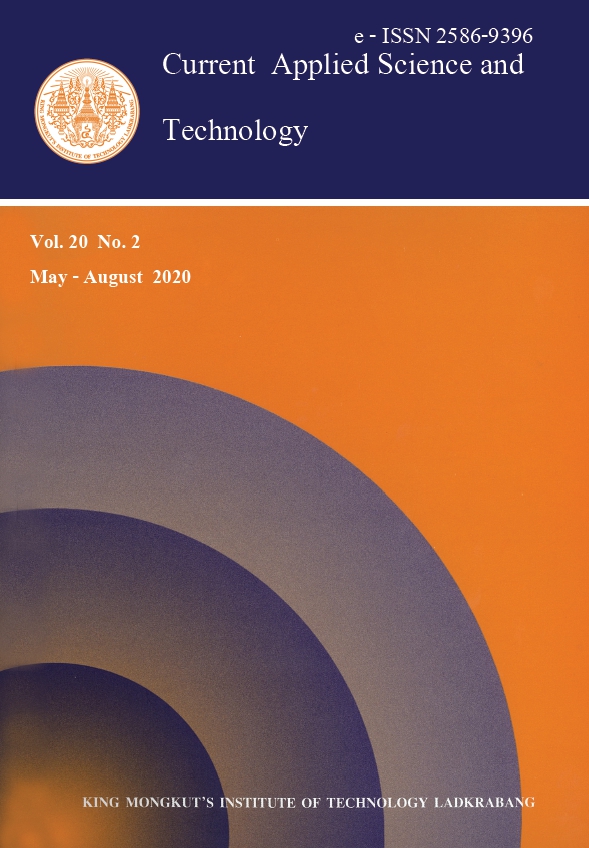Chicken Feathers Based Keratin Extraction Process Data Analysis Using Response Surface - Box-Behnken Design Method and Characterization of Keratin Product
Main Article Content
Abstract
In the process of production of chicken poultry meat for human consumption, the discarded feather is a solid waste management problem worldwide. There are also millions of tons of feather waste every year from the poultry meat industry in Ethiopia. In general, from this waste feather, keratin constitutes to about 91% which could be augmented for further value-added products such as basic nutrient, medical substance and fertilizer. Hence, this present research is carried out to optimize the extraction and characterization of keratin protein from the waste chicken feather. Keratin extraction using Na2S as a reducing agent was studied by response surface methodology using the Box-Behnken method. This data analysis is applied for the keratin extraction process to study the effect of the most significant factors such as reducing agent concentration, extraction time and mixing ratio. Applying response surface methodology, a maximum yield of keratin reached 75.39% at sodium sulfide concentration of 0.43 M, extraction time of 5.43 h and mixing ratio of 26.65 g/l. Keratin protein product was characterized using Fourier Transform Infrared spectroscopy (FTIR), UV-Visible spectroscopy, scanning electron microscopy (SEM), and X-Ray Diffraction (XRD). The analysis by FTIR confirmed the presence of chemical compositions such as carboxyl acid and amino groups in the protein samples. The surface morphology studied by scanning electron microscopy analysis showed the formation of porosity and aggregate which were expected on the powder of keratin. Structural studies carried out by X-ray diffraction suggest that sodium sulfide stabilized the β-sheet structure of the protein.
Keywords: chicken feather; keratin protein; sodium sulfide; RSM-BBD
*Corresponding author: Tel.: +25 191 321 7366
Email: hadtess2009@gmail.com
Article Details
Copyright Transfer Statement
The copyright of this article is transferred to Current Applied Science and Technology journal with effect if and when the article is accepted for publication. The copyright transfer covers the exclusive right to reproduce and distribute the article, including reprints, translations, photographic reproductions, electronic form (offline, online) or any other reproductions of similar nature.
The author warrants that this contribution is original and that he/she has full power to make this grant. The author signs for and accepts responsibility for releasing this material on behalf of any and all co-authors.
Here is the link for download: Copyright transfer form.pdf
References
Esparza, Y., Ullah, A., Boluk, Y. and Wu, J., 2017. Preparation and characterization of thermally crosslinked poly(vinyl alcohol)/feather keratin nanofiber scaffolds. Matererials and Design, 135 (5), 1-9.
Reichl, S., Borrelli, M. and Geerling, G., 2011. Keratin films for ocular surface reconstruction. Biomaterials, 32, 3375-3386.
Tesfaye, T., Sithole, B. and Ramjugernath, D., 2017. Valorisation of chicken feathers: a review on recycling and recovery route-current status and future prospects. Clean Technologies and Environmental Policy, 19 (10), 2363-2378.
Reddy, N. and Yang, Y., 2007. Structure and properties of chicken feather barbs as natural protein fibers. Journal of Polymer and the Enviroment, 15, 81-87.
Aluigi, A., Zoccola, M., Vineis, C., Tonin, C., Ferrero, F. and Canetti, M., 2007. Study on the structure and properties of wool keratin regenerated from formic acid. International Journal of Biological Macromolecules, 41 (3), 266-273.
Vineis, C., Varesano, A., Varchi, G. and Aluigi, A. 2019. Extraction and characterization of keratin from different biomasses. In: Sharma, S., Kumar, A., eds. Keratin as a Protein Biopolymer. Cham: Springer International Publishing, 35-76.
Gupta, A., Perumal, R., Yunus, R.B.M. and Kamarudin, N.B., 2012. Extraction of keratin protein from chicken feather. 8 (6) 732–737. [online] Available at: https://pdfs.semanticscholar.org/ c72d/3cb1ded22997f6aa85ded41f8f1180d9d1aa.pdf
Sharma, S. and Gupta, A. 2016. Sustainable management of keratin waste biomass: applications and future perspectives. Brazilian Archives of Biology and Technology, 59: e16150684, http://dx.doi.org/10.1590/1678-4324-2016150684.
Rouse, J.G. and Van Dyke, M.E., 2010. A Review of keratin-based biomaterials for biomedical applications. Materials, 3 (2), 999-1014.
Sharma, S., Gupta, A., Chik, S. M.S.T., Kee, C.Y.G., Podder, P.K., Thraisingam, J. and Subramanian, M., 2016. Extraction and characterization of keratin from chicken feather waste biomass : a study. The National Conference for Postgraduate Research, Universiti Malaysia Pahang, December, 2016, 693-699.
Yadav, R.N., 2017. A hybrid approach of Taguchi-Response Surface methodology for modeling and optimization of Duplex Turning process. Measurement, 100, 131-138.
Eslahi, N., Dadashian, F. and Nejad, N.H., 2013. An investigation on keratin extraction from wool and feather waste by enzymatic hydrolysis. Prepative Biochemistry and Biotechnology, 43 (7), 624-648.
Sharma, S., Gupta, A., Kumar, A., Kee, C.G., Kamyab, H. and Saufi, S.M., 2018. An efficient conversion of waste feather keratin into eco-friendly bioplastic film. Clean Technologies and Environmental Policy, 20 (10) 2157-2167.
Wingfield, P., 1998. Protein precipitation using ammonium sulfate. Current Protocols in Protein Science, Hoboken, NJ, USA: John Wiley & Sons, Inc., A.3F.1-A.3F.8.
Shah, A., Tyagi, S., Bharagava, R.N. and Belhaj, D., 2019. Keratin as a Protein Biopolymer. Cham: Springer International Publishing..
Goddard, D. R. and Michaelis, L. 1934. A studies on keratin. The Journal of biological chemistry, 106 (2) 605–614.
Dou, Y., Zhang, B., He, M., Yin, G. and Cui, Y., 2016. The structure, tensile properties and water resistance of hydrolyzed feather keratin-based bioplastics. Chinese Journal of Chemical Engineering, 24 (3), 415-420.
Kamarudin, N.B., Sharma, S., Gupta, A., Kee, C.G., Chik, S.M.S.B.T. and Gupta, R., 2017. Statistical investigation of extraction parameters of keratin from chicken feather using Design-Expert. 3 Biotech, 7 (2), 127, https://doi.org/10.1007/5/3205-017-0767-9.
Idris, A., Vijayaraghavan, R., Rana, U.A., Patti, A.F. and MacFarlane, D.R., 2014. Dissolution and regeneration of wool keratin in ionic liquids. Green Chemistry, 16 (5), 2857-2864.
Yamauchi, K., Yamauchi, A., Kusunoki, T., Kohda, A. and Konishi, Y., 1996. Preparation of stable aqueous solution of keratins, and physiochemical and biodegradational properties of films. Journal of Biomedical Materials Research, 31 (4), 439-444.
Wojciechowska, E., Włochowicz, A. and Wesełucha-Birczyńska, A., 1999. Application of fourier-transform infrared and raman spectroscopy to study degradation of the wool fiber keratin. Journal of Molecular Structture, 511-512, 307-318.
Jose, S., Nachimuthu, S., Das, S. and Kumar, A., 2018. Moth proofing of wool fabric using nano kaolinite. Journal of Textitle Institute, 109 (2), 225-231.


